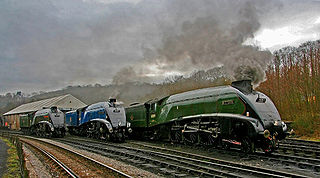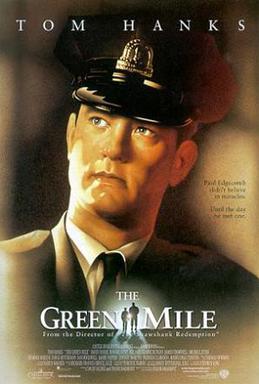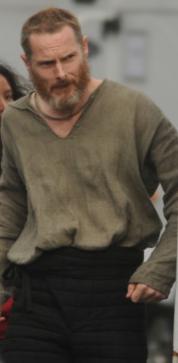The Mooring may refer to:
- The Mooring (2012 film), an American thriller film directed by Glenn Withrow.
- The Mooring (2021 film), a Mexican horror film directed by Tamae Garateguy.
The Mooring may refer to:
Moor or Moors may refer to:

Othello is a tragedy written by William Shakespeare, probably in 1603. The story revolves around two characters, Othello and Iago.
More may refer to:

The North Yorkshire Moors Railway (NYMR) is a heritage railway in North Yorkshire, England, that runs through the North York Moors National Park. First opened in 1836 as the Whitby and Pickering Railway, the railway was planned in 1831 by George Stephenson as a means of opening up trade routes inland from the then important seaport of Whitby. The line between Grosmont and Rillington was closed in 1965 and the section between Grosmont and Pickering was reopened in 1973 by the North York Moors Historical Railway Trust Ltd. The preserved line is now a tourist attraction and has been awarded several industry accolades.
Moro may refer to:
Lightship may refer to:

The Green Mile is a 1999 American fantasy drama film written and directed by Frank Darabont and based on Stephen King's 1996 novel of the same name. It stars Tom Hanks as a death row prison guard during the Great Depression who witnesses supernatural events following the arrival of an enigmatic convict at his facility. David Morse, Bonnie Hunt, Sam Rockwell, and James Cromwell appear in supporting roles.
Beyond the Sea may refer to:

Sean Harris is an English actor and writer. He played Ian Curtis in 24 Hour Party People (2002), Micheletto Corella in The Borgias (2011–2013), Fifield in Prometheus (2012), Solomon Lane in Mission: Impossible – Rogue Nation (2015) and Mission: Impossible – Fallout (2018), Philip in Possum (2018), William Gascoigne in The King (2019) and Henry Peter Teague / Peter Morley in The Stranger (2022).
See No Evil is part of the adage "see no evil, hear no evil, speak no evil."
The tarot refers to a pack of playing cards used from the mid-15th century to play games and, later, also for cartomantic packs of cards used for divination.
Berber or Berbers may refer to:
Common Ground may refer to:
The Duel may refer to:
A daydream is a fantasy that a person has while awake.
A crow is a bird of the genus Corvus, including ravens and rooks.

The People Speak is a 2009 American documentary feature film that uses dramatic and musical performances of the letters, diaries, and speeches of everyday Americans. The film gives voice to those who, by insisting on equality and justice, spoke up for social change throughout U.S. history and also illustrates the relevance of this to today's society.

Jane Eyre is a 2011 romantic drama film directed by Cary Fukunaga and starring Mia Wasikowska and Michael Fassbender. The screenplay is written by Moira Buffini based on Charlotte Brontë's 1847 novel of the same name.

Samiya Mumtaz, is a Pakistani film and television actress. She has performed in several TV dramas.

Maleficent: Mistress of Evil is a 2019 American fantasy film produced by Walt Disney Pictures. Directed by Joachim Rønning from a screenplay written by Linda Woolverton, Micah Fitzerman-Blue and Noah Harpster, it is a sequel to Maleficent (2014), with Angelina Jolie returning to portray the title role. Elle Fanning, Sam Riley, Imelda Staunton, Juno Temple, and Lesley Manville also return to their previous roles, with Harris Dickinson replacing Brenton Thwaites from the first film and Chiwetel Ejiofor, Ed Skrein, and Michelle Pfeiffer joining the cast as new characters. Set five years after Maleficent, the film sees the eponymous character face the neighboring kingdom's manipulated perception of herself as a villain, in addition to a subplot of the rise of an endangered, powerful fairy race known as the Dark Fae.